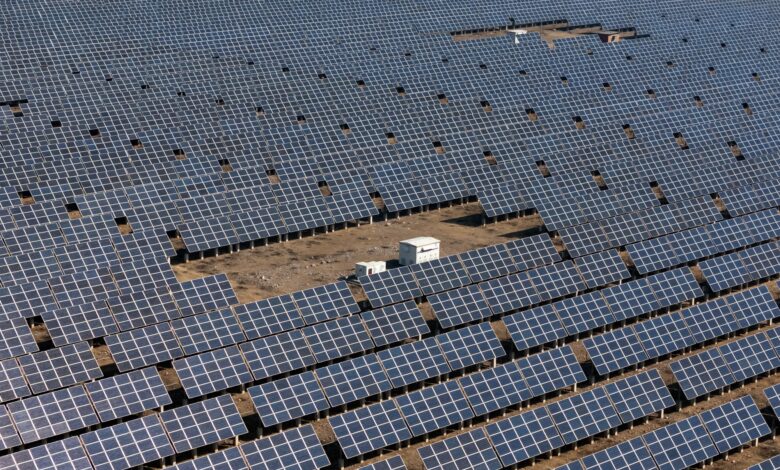China eases rules that could slow world-beating solar boom

CHINA has allayed fears that growing grid congestion could tap the brakes on its record pace of renewable installations, by relaxing limits on how much renewable power can be utilised in energy-rich areas.
The move is one of a number of government policies released on Wednesday (May 29) designed to promote clean energy. Others include speeding up battery storage installations and accelerating the build-out of power lines. Beijing has also called for a more rigorous approval process for some clean energy manufacturing amid excess capacity that’s slashed corporate profits.
The new policies serve China’s existing goals of cutting nationwide energy consumption and carbon dioxide emissions per unit of GDP by 2.5 per cent and 3.9 per cent respectively in 2024. The government’s top economic planning agency acknowledged at a briefing on Thursday that it’s fallen behind its targets, and will likely miss the 13.5 per cent reduction in energy intensity by 2025 that was laid out in the current five-year plan.
Shares of Chinese clean energy companies broadly rose on the policies included in the State Council’s action plan. Polysilicon maker GCL Technology Holdings rose as much as 10 per cent in Hong Kong, while wind farm operator China Longyuan Power Group gained as much as 6.1 per cent.
Power wastage
The plan implements a widely rumoured change to rules governing how much renewable power can be wasted because of grid-capacity constraints. Wind and solar farms in “areas with better resource conditions” can now have as much as 10 per cent of their generation curtailed, compared to a previous cap of 5 per cent. China has seen increased curtailments this year after shattering records for solar and wind installations in 2023.
The change will allow more renewables to be deployed in places where the grid would have been deemed overcrowded. That could mean China installs an additional 30 gigawatts of solar panels this year, Albert Miao, head of Asia energy transition research at Macquarie Capital, said.
A NEWSLETTER FOR YOU

ESG Insights
An exclusive weekly report on the latest environmental, social and governance issues.
At the same time, it could pressure profits at renewable power plants, which may see more of their generation cut off, according to Dennis Ip, an analyst at Daiwa Capital Markets. Still, those utilities are likely to benefit from other policy tailwinds for clean energy in the government’s plan, he said.
The plan also calls for better deployment of new production capacity for a number of new energy metals, including the silicon used in solar manufacturing and the lithium in batteries. It also prohibits preferential power rates for sectors with high energy intensity, a move that’s likely to benefit GCL’s low-energy polysilicon production methods, Ip said.
Other policies include raising battery storage capacity to 40 gigawatts by 2025, from a previous target of 30 gigawatts. BLOOMBERG


 Slots with Welcome Bonus Up to 400%
Slots with Welcome Bonus Up to 400%